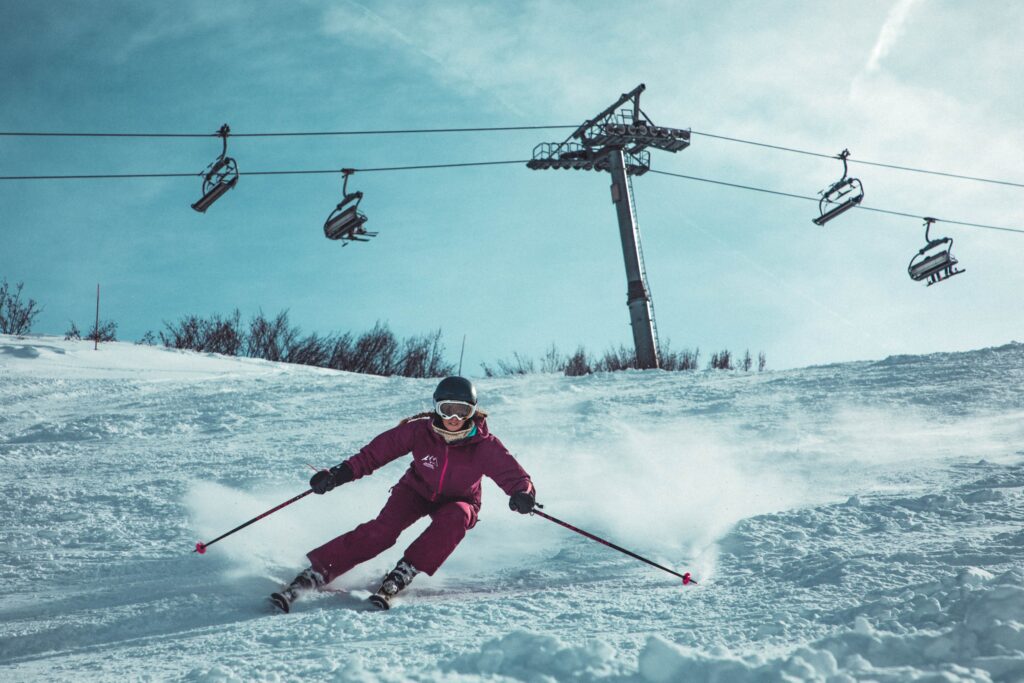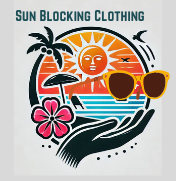Can I Have A Heatstroke While Snow Skiing, or is it a sunstroke? Is there a difference?

I was curious about the difference between heat stroke and sunstroke. While there may some technical terms that are different, it seems that the 2 forms of too much heat being generated by the body are very similar. So the two terms are used most times interchangeably.
Yes, you can have heatstroke without the heat of the sun. However, sunstroke is less risky than other forms of injury for skiers.
This article will inform you of who will be most suspecptible and how you can help or prevent sunstroke while you are skiing. Don’t let heatstroke cause you to go home early.
What Is Heat Stroke?
Heatstroke is a life-threatening condition that happens when your body temperature rises above 104 degrees Fahrenheit (40 degrees Celsius).
It’s usually the result of overexertion in hot, humid conditions.
Symptoms can include confusion, seizures, or loss of consciousness. Untreated, heatstroke can lead to organ failure, a coma, or death.
What is Sunstroke?
There are two terms that refer to the same condition. Heatstroke (or sunstroke) happens when the body can no longer maintain a temperature of under 105° F. People almost always have warning symptoms before heatstroke, yet sometimes they do not pay attention or, are not able to make appropriate changes in what is going on.
So, these two terms can be used for the condition. However, I found that heatstroke seems to be the more widely used term.
So, Can I Have A Heatstroke While Skiing?
Actually, yes you can. While we normally worry about staying warm when on the snow, there are conditions that would make the perfect storm for heatstroke to happen.
When skiing, heat can build up in your body and catch you by surprise. As you are in the cold when skiing, some of us tend to not be as careful of clothing fit. The layers of clothing under ski gear can fit too snugly and body heat can’t escape.
If you have overprepared for the cold, and get caught on an unexpectedly warm day the heat will build faster.
If you have sunburn on your face and neck, your body may not be cooling efficiently.
Dehydration can also play a part in your body developing heat stroke while snow skiing.
If consuming alcohol during your skiing weekend, add extra water.
Then some will keep fluid consumption low to keep restroom breaks to a minimum. Keep your body hydrated.
Two Types Of Heatstroke
First of all, there are two types of heatstroke:
- Exertional heatstroke: This form of heatstroke is usually the result of physical activity and overexertion in hot, humid conditions. Or in cold weather, if your body is not cooling itself properly, heatstroke can result. It can usually develop in a few hours. Those playing sports need to know the symptoms of heatstroke.
- Non-exertional heatstroke: Also called classic heatstroke, this type can occur due to age or underlying health conditions. It can develop over several days, while also being exposed to very warm conditions. Allowing your body to stay dehydrated during a skiing outing, just the change the elevation can make on our bodies for walking about and being moderately active can have an adverse effect.
Both kinds can occur while snow skiing.
Are Heat Exhaustion And Heatstroke The Same Thing?
Heat exhaustion and heatstroke are both types of hyperthermia. They are examples of our body not being able to adapt to the situation it is in.
(Hypothermia is a medical emergency that occurs when your body loses heat faster than it can produce heat, causing a dangerously low body temperature. Normal body temperature is around 98.6 F (37 C). Hypothermia occurs as your body temperature falls below 95 F (35 C).
Heat exhaustion can result in a heat stroke if left untreated. But heat exhaustion isn’t as severe as heat stroke, doesn’t cause neurological problems, and usually isn’t life-threatening.
In both heat exhaustion and heat stroke, your body can’t cool down fast enough.
Cold Weather Also Brings The Risk of Hyperthermia
Anyone can get heatstroke. Just as anyone can suffer hyperthermia.
Just a word of caution, as they are at high risk, infants and the elderly are especially venerable. Their bodies may not be able to regulate temperature effectively. Fortunately, these are members of your family who probably won’t be skiing.
However, there is a chance that they might be out for a walk or in a snowmachine. They may not be aware that they are getting cold until they are too cold.
Stay alert with everyone, but especially for these two parts of your family.
As the condition can develop over a couple of days or longer, you may not realize that your family member is sleeping in an extra cold room. As with other health issues, existing conditions also can make your loved one more venerable.
The weather can affect you more if you are not feeling well, or you are extra tired. Often, you are covered up well, and may not be able to cool enough. This is a problem just like getting too cold.
This is one of the reasons it is so important to protect your skin when you are in the sun. Your skin is very important for helping regulate your body temperature. Research is finding that our carelessness with skin protection can slow your body’s ability to heat or cool.
Other Factors Affect Your Ability To Heat Or Cool Your Body
Consider some other factors that you may not have thought about that can increase your risk of heatstroke like:
- Drinking alcohol can cause your body to not be able to handle changes in temperature efficiently. Especially drinking much more than you do normally.
- Being a male, because you are usually larger than females and have more surface to heat or cool makes your body stress out quicker than women.
- Allowing yourself to become dehydrated. This can happen when you are out in the snow and having fun and forget to drink water.
- Do you regularly take medication that affects your body’s ability to regulate your body’s temperature? Some medications that you may forget about taking like diuretics, sedatives, tranquilizers, or heart and blood pressure medications.
Don’t Forget These Risks As Well
- Do you have medical conditions, like a sleep disorder or problems with your heart, lungs, kidneys, liver, thyroid, or blood vessels? This also can affect keeping your body in the correct temperature range for your health.
- If you wear heavy or tight clothing, such as protective gear. Will affect your body’s response and can make regulating your temperature a bit difficult. With your awareness of this fact, you can make adjustments as needed.
- Any time you have a high fever you are at risk of your body not being able to cool fast enough. Keep your non-alcoholic liquids going down to help.
- Are you considered obese? Your body may have difficulty keeping your temperature where it should be. Help yourself by keeping enough water in your system, especially in strenuous sports like skiing.
- When you have a past history of heatstroke, you are more vulnerable. However, you know if it has happened before, and can self-monitor.
- If you are in poor physical condition, you may be subject to heatstroke, or hypothermia. Skiing is a strenuous sport. If you are not in condition, take frequent breaks.
Heatstroke, Is It A Common Occurrence?
Research tells us that heatstroke occurs at the rate of about 20 per 100,000 people every year, here in the US.
While heatstroke does cause between 240 and 833 deaths in the U.S. annually. Most have other contributing conditions.
Few people have full-fledged heatstrokes while skiing. Most occur when the patient has other conditions. Most people wisely slow down and allow their bodies to cool when skiing. Normally, you will get tired before the heatstroke stage.
Paying attention to how your body is reacting to the exercise will help you avoid getting to the dangerous point of heatstroke.
Hypothermia remains a danger, as when you are extra tired, you may not realize how cold you are. Skiing when you have health issues can lead to your body not recognizing that it is in trouble.
When you only have a weekend to ski, you want to make use of every minute, and get all the use from your day pass. Understandable, but being aware of where you are with your health is much more important for a fun trip skiing.
How Do I Know I Am Having A Heatstroke?
Most heatstroke happens when your body can’t cool itself down.
I know you remember your hypothalamus. That part of your brain that controls many bodily functions?
Your hypothalamus sets your core body temperature. Typically your temperature is set at about 98.6 degrees Fahrenheit (37 Celsius). But if your body makes more heat than it releases, your internal temperature can rise above this set point.
If you produce more heat with a fever, or by strenuous activity, you will need to help your body by taking appropriate measures.
With a fever, cool but not cold liquids into your tummy can help, as well as Tylenol, or aspirin. Anything more, that advice should come from your Primary care physician.
If you have stayed out in the cold too long, getting some warm liquids, not hot, but warm into your body is a good starting place. Make sure your feet are not wet and cold, and that gloves are not wet.
Wrapping in a blanket to hold body heat in can help get your inner temperature reset. Allow your body to heal and regulate itself.
Anything more should come from your Primary care physician here as well. When these conditions occur, a call to a medical professional is important.
Signs and Symptoms Of Heatstroke
Please be aware, heatstroke is a medical emergency.
When you or someone you know exhibits any of the following signs or symptoms, we advise calling 911 immediately.
These are medical terms you may not be familiar with. Sometimes my physican uses words that scare me, untill I find out what they are saying:
- Anhidrosis means little or no sweating. Physical symptoms like dizziness, flushing, muscle cramps, overall weakness, feeling hot, and not being able to cool off.
- Ataxia is the word for problems with movement and coordination.
- Balance problems. Problems with balance can involve dizziness or vertigo, causing a spinning or falling sensation.
- Delirium, or a confused mental state, occurs suddenly. A person has a change in mental status and acts disoriented and distracted. More common in older adults, especially those with dementia, and people who need hospitalization.
- Dizziness, lightheadedness, feeling unsteady. Affects your sense of balance and can increase your risk of falling.
Complications Of Heatstroke
Someone with heat stroke or hypothermia can develop into shock or slip into a coma.
High body temperature can lead to:
- Acute respiratory distress syndrome (ARDS).
- Brain swelling.
- Kidney failure.
- Liver failure.
- Metabolic dysfunction.
- Nerve damage.
- Reduced blood flow to the heart and other circulatory problems.
Low body temperatures can also lead to similar problems. It is a big deal, and you must be alert to both conditions. The effects can be permanent for some.
Can I have a heatstroke while snow skiing? This is often disreguarded as just being tired. Be alert.
How To Treat Heatstroke
Heatstroke requires immediate medical treatment.
If you’re waiting for an ambulance to arrive, try to cool the person by:
- Placing ice packs to the neck, groin and armpits.
- Encouraging the individual to drink slightly salted fluids, such as sports drinks or lightly salted water.
- Helping them lay down in a cool, shady, well-ventilated spot.
- Immersing them in cool water, if possible, remember cool, not cold.
- Misting them with water and blowing air across their bodies or evaporative cooling.
- Pay attention to their breathing carefully and removing any airway blockages. Or loosen tight fitting clothing if possible.
- Do not give any medications, including aspirin and acetaminophen at this point.
Once At The Hospital
After arriving at the hospital, the person with heatstroke may receive:
- Cooled intravenous fluids through a vein in their arm.(I-V)
- A cooling blanket may cover over most of the body.
- You may get an ice bath.
- If temperature is still high, a medication to prevent seizures.
- Supplemental oxygen also helps the person with getting their normal temperature back.
The length of time you stay in the hospital depends on the severity of your heatstroke and how well your organs are functioning.
This is a dangerous condition and you should take care that your body is working correctly to continue on.
The movie and TV heroes may refuse treatment and insist on getting home before treatment is complete. Please do not be foolish and take this situation lightly.
Whether you had heatstroke or hypothermia, get the treatment you need to fully recover.
Prevent More Heatstroke?
Your outlook after heatstroke depends on your individual factors.
- Your age.
- How high your body temperature spiked to.
- The length of time your body temperature stayed high before you received treatment.
- Your overall health conditions.
There is a wide range of numbers that fix the actual death rate. At 10% to 65% of people with non-exertional heatstroke die from the illness. This is the portion whose heatstroke arose after a high fever, being shut in a car, or from being in a hot home with no cooling features.
The outlook is much better for exertional heatstroke, which has a mortality rate of 3 to 5%.
Some people experience permanent organ damage or neurological dysfunction. Sometimes it is permanent, sometimes it corrects itself.
As you are recovering after heatstroke, you can expect changes in your body temperature for several weeks.
You should avoid physical activity for at least a week. Periodic tests to monitor your kidney and liver function will also be important.
Even the temporary complications of heatstroke can take several months to completely go away.
Once you’ve had heatstroke, you’re more likely to have this heat illness again. It is important to take preventive measures any time you plan to be in hot conditions.
What To Watch For After Recovery From Heatstroke
Contact your doctor right away if you experience anything abnormal if you’ve had heatstroke and are recovering:
- Cognitive dysfunction (problems thinking or remembering).
- Difficulty breathing.
- Low urine output.
Take The The Heat Stroke Quiz
Results Of My Heat Stroke Quiz
A hot summer day can be just as deadly as an icy and cold winter day for older adults.
How much do you know about heatstroke and heat exhaustion?
Based on information from the National Institute on Aging (NIA) and the CDC. My score is 89.
What was your score?

Sami’s Take On Can I Have A Heatstroke While Snow Skiing?
Yes, you can have a heatstroke while snow skiing. However, it isn’t the main thing that skiers are at risk for. Snow skiing is a strenuous exercise and can cause you to work hard. Your body can build up a head of steam while working hard.
Hyperthermia is also a risk for skiers.
It seems that most venerable people for heatstroke are those who are out of shape, or who have other physical conditions that add to the risk.
So this is an awareness situation. You just have to settle in and make the self-assessment to see if you really need to make one more run. Have you had enough water? Are you overtired?
Sometimes the decision to call it a day is the best decision, even if there are some daylight hours left.
Going home well, after having fun and being able to resume duties at home will make for better memories. We all love vacations and fun. However, knowing when to say when, can preserve your health at a better level than being all for another run!
Being aware of where your body’s health is will make the trip more fun.
Disclaimer
Your own physician is the final stop for good advice to take care of yourself. Please use the suggestions given here to help you prepare for eventual happenings.
You seldom plan to have a sunstroke. Emergencies rarely occur in convenient locations or at a good time. Arming yourself with some information prepares you ahead.
Now, enjoy your wintertime fun in the sun.
The real pay of for you is to make you aware of what can happen to your body, even in cold weather conditions.
